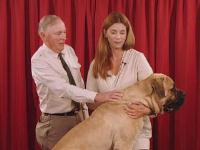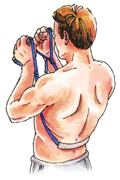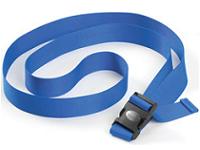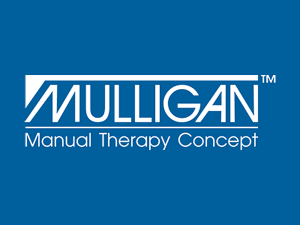

$74.00
World renowned canine physical therapist Debbie Gross Saunders and Brian Mulligan demonstrate Mobilization With Movement (MWM) techniques for dogs.
Description
World-renowned canine physical therapist Debbie Gross Saunders and Brian Mulligan demonstrate Mobilization With Movement (MWM) techniques for dogs. She gives special considerations to sustained natural apophyseal glides (SNAGS) and natural apophyseal glides (NAGS) for reducing pain and increasing mobility.
Course Details
| Instructor(s) | |
|---|---|
| Course Length | |
| Platform |
Details
Run Time: 1.5 hours
Attendee: Physical Therapists, PTA’s, Students, Athletic Trainers
Required Equipment: Personal Computer, Tablet, or Smartphone with access to Broadband Internet (<1.4 mbps)
Examination: 19-question test. Passing grade of 70% or higher required for certificate
Course Evaluation: Yes
Certificate of Completion: Yes
Workbook/Handout: Yes
Course Approvals/Certifications:
Outline
Module I
Unit 01: Introduction & Basic Concepts
Unit 02: The Canine Spine
Unit 03: Canine Cervical NAGS
Unit 04: Cervical NAG Demonstration
Unit 05: Lumbar NAGS
Unit 06: Cervical SNAGS
Unit 07: Thoracic/Lumbar SNAGS
Unit 08: Extremity Mobilization & Side Flexion
Final Test
Certificate of Completion
Course Evaluation
Learning Goals
Upon completion of this class, you should be able to:
- Summarize the concept of Mobilization with Movement (MWM) along with its technique guidelines
- Describe MWM techniques for dogs
Behavioral Objectives
Upon completion, the participant will be able to:
Unit 1 – Introduction and Basic Concepts
- Restate 7 Rules or guidelines to consider when applying mobilizations to a canine client with limited spinal mobility.
- Identify 5 ways to make an objective and functional assessment on a Canine client with spinal mobility issues.
Unit 2 – The Canine Spine
- Identify 3 anatomical differences in canine anatomy compared to human anatomy.
Unit 3 and 4 – Canine Cervical NAGS and Demonstration
- Apply a NAG in the cervical spine of a canine with neck pain or limited mobility.
- Recognize 2 signs a dog is relaxed during a C-NAG application of a canine with cervical hypomobility.
- Identify 3 rules to follow when applying a C-NAG in a canine with pain or limited mobility.
- Recognize 3 indications for the application of a C-NAG in a canine client.
Unit 5 – Lumbar NAGS
- Demonstrate a lumbar NAG in a canine client with lumbosacral dysfunction.
- Recognize 4 indications for the application of a lumbar NAG in a canine with lumbosacral conditions.
- Explain 2 goals of a lumbar NAG in the treatment plan of a canine client.
Unit 6 – Cranial SNAGS
- Demonstrate a C-SNAG in a dog with limited cervical extension.
- Demonstrate a C-SNAG in a dog with limited rotation.
- Explain what a C-SNAG technique is to the handler of a canine client with a cervical dysfunction.
- Identify 4 rules to follow when applying a C-SNAG in a canine client with a cervical dysfunction.
Unit 7 – Thoracic and Lumbar SNAGS
- Demonstrate a thoracic /lumbar SNAG in the canine client with limited extension.
Unit 8 – Extremity Mobilization and Side Flexion
- Apply a C-SNAG for Side flexion in the performance dog with limited turning ability.
- Assess carpal and metacarpal ROM in an athletic canine client with a carpal hyperextension injury.
You may also like…
-
- Mulligan ‘SELF SNAG’ Lumbar Strap
- Thin enough to hook under the chosen lumbar spinous processes and can be held securely…
- $15.95
-
- Mulligan Mobilization Belt
- Specially designed mobilization strap used to perform "Mobilizations with Movement, NAGS, SNAGS, and More" exercises.
- $19.25
-
- Mulligan Concept (MCTA) Online Bundle
- Thousands of professionals worldwide have discovered the benefits of mastering The Mulligan Concept that includes…
- $159.00
Course Length: 12 hours




